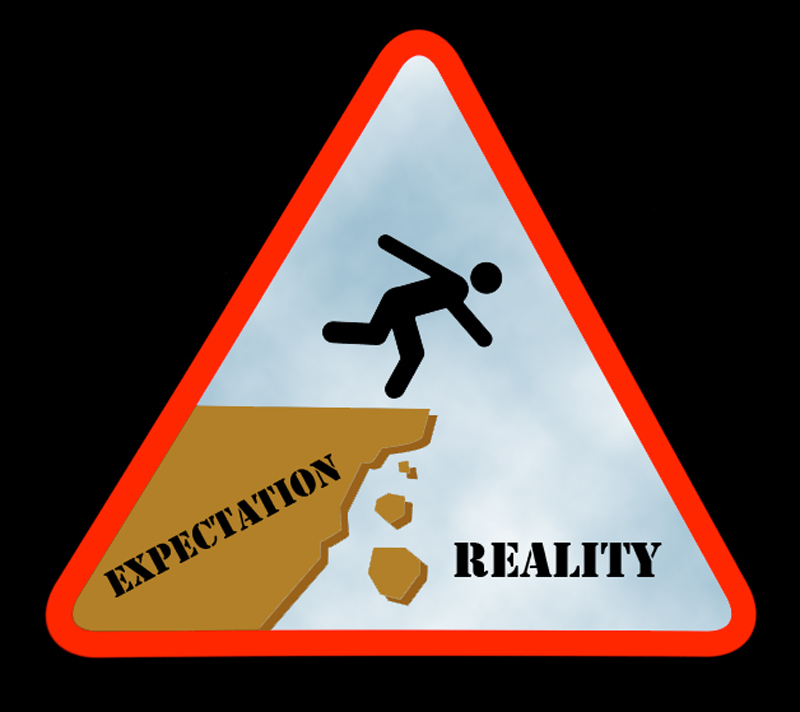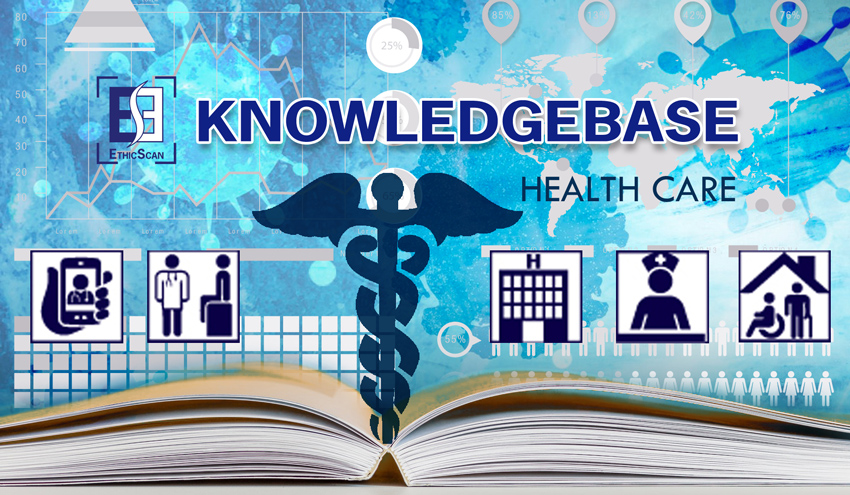What We May Never Recover From: COVID Occupational Moral Injury

The Issue
Moral distress and its consequence, moral injury, has achieved some attention among physicians, nurses and EMTs during the pandemic, but has yet to be influential in prompting governments and institutions to give sufficient adequate consideration to the lack of systems-wide psychological support available to staff, both now and after the pandemic leaves us. Addressing the costs of moral injury among staff, as well as patients, families and the wider public, calls for attention from governments, professional associations, hospitals, long-term care facilities, and care leaders irrespective of vaccine progress long after the pandemic .
This blog addresses three questions:
- What is moral injury and how and why is it different from stress, burnout, depression, or PTSD?
- What are the causes and prospective cures as well as who is affected?
- Finally, if the ethical costs and human damage is so widespread, why are we not allocating sufficient attention to addressing this problem?
What is Occupational Moral Injury

Moral injury (and its precursor “moral distress”) can occur when someone engages in, fails to prevent, or witnesses acts that conflict with their values or beliefs. Most health care workers typically do not experience significant distress from difficult situations at work because of their training and preparation, health care cultural norms, messages and behavior of peers and leaders, and acceptance by families and the culture at large. However, in unprecedented contexts, such as this pandemic, a growing number of professionals report having difficulty coping with the magnitude of unfamiliar, distressing work experiences to the extent that distress becomes injurious.
What some essential workers have experienced over the last few months may stay with them for a long time. Occupational moral injury arises during work such as armed combat or emergency response when people carry out, fail to prevent, or become aware of, human actions that violate deep moral commitments. Occupational moral injury is often associated with psychological distress, and moral responses including guilt, anger and disgust. Moral injury during COVID-19 may be related to, but is distinct from:
- 1) burnout,
- 2) adjustment disorders,
- 3) depression,
- 4) traumatic stress/PTSD,
- 5) moral injury in the military, and
- 6) moral distress.
According to care professionals and moral philosophers, resentment or distress does not automatically follow in the wake of harm itself. Rather, it more often arises when harmed patients or their loved ones or caregivers apprehend that their normative expectations of respect, truthfulness, duty of care, or meaningful remedial action are not being met. It is not the initial harm, but rather the violated expectations about what constitutes a proper ethical response to it, that disrupts individual well-being, moral rejuvenation or repair.
While not a mental disorder itself, moral injury undermines core capacities for well-being, including a sense of ongoing value-laden actions, competence to face and meet challenges, and feelings of belonging and meaning. According to psychologists, psychiatrists and moral philosophers, the characteristics of occupational moral injury, moral wound or resentment include:
- it can be experienced by anyone
- it arises from sources that include injustice, cruelty, status degradation and profound breaches of moral expectations
- it is associated with moral and psychological anguish feelings such as bewilderment, humiliation and resentment
- it affects patients, service users, families and loved ones as well as care staff
- it is spoken of in military combat tropes with language like fight, battle, front lines, winning the war, and circumstances said to be unprecedented
- unlike PTSD, the diagnosis of a moral injury does not require a qualifying exposure to a traumatic stressor
- moral distress can serve as a guide for health care improvement, and rapid systemic interventions to address moral distress may help to prevent and mitigate the severity of impact of moral injury.
Moral injury isn’t confined to health professionals. Situations in which it is not possible to fulfill cherished moral commitments are the first and major source of moral injury for all of us. Grief and anger come from people not allowed to be with parents, children and partners when they died; unable to attend or invite people to funerals; not permitted to be present at births; unable to greet newborns, or to visit to support new mothers. It is not just those directly affected who expressed outrage, but many who empathized with them and who had themselves followed the rules. For citizens, being prevented from meeting fundamental moral commitments associated with birth, love and death is akin to the moral injury experienced by health care workers when they are unable to provide the care they believe they should.
Causal Factors and Effects

Moral injury is birthed in gaps between principled expectations and reality. Potentially morally injurious circumstances arise whenever patients are harmed; when staff are poorly treated for raising concerns; when patients or staff suffer discriminatory behaviour; when inadequate resources put staff and patients at risk; and when there is avoidance of accountability at the highest level of public institutions. Citizens who trust care providers have a normative expectation that they should keep them from harm, and also that they will keep them from harm. Staff who trust care providers have a normative expectation that employers should provide appropriate personal protective equipment (PPE), and that they will provide appropriate PPE. When normative expectations are mostly met, individuals and communities are able to have trust, confidence and hope in the future.
According to the American Psychiatric Association, circumstances that may lead to moral injury include:
- (a) Rationing of scarce health care resources (e.g., ventilators, PPE, and hospital/ICU beds).
- (b) Difficult triage decisions based on a patient’s likelihood to benefit from or survive certain interventions (e.g., deciding which patient can access the last ventilator), especially when such decisions must be made rapidly and without a sound evidence base.
- (c) Health-care workers’ fears of infection and infecting their families that may influence their decision-making about the type, level, or rapidity of care provision in high-risk, super-spreading events.
- (d) Administrative and policy decisions that represent an organization’s best efforts to respond to a disaster actually confront health-care workers with impossible choices between sub-optimal care for individual patients or families versus community protection and well-being (e.g., limitations on visitor access to patients with COVID-19).
- (e) Being barred from work (e.g., due to mild COVID-19 symptoms or after recovery from COVID-19) when colleagues and patients desperately need help.
- (f) Being unavailable to care for seriously ill patients who do not have COVID-19 and who need attention.
If and when this pandemic time is over, the trauma listed above for some will have just begun. From an ethical lens, the effects of occupational moral injury include:
| Direct Effects | Secondary Effects | Long Range Effects |
| Anguish, deep emotional pain inflicted on patients, their families, and care givers | ‘Second hand harm’ through defensive, dishonest, unempathetic or otherwise unhelpful responses to adverse events in care | Nurses and physicians remain held to an impossibly high standard of knowledge and critical care because of lack of knowledge about virus mutation |
| Actions that profoundly insult or degrade others | We learn that we cannot rely on each other, or authority, to uphold fundamental normative expectations | Profound alienation from others, including family, co-workers and institutional leaders |
| Actions that damage self-respect, respect for others as moral agents, and respect for the rules of morality or the moral order | We suffer a loss of trust and confidence in (among other things) people, principles, rules, processes and institutions | Patient and lay representatives excluded from system recovery planning or consultations around service reconfiguration |
| Death of care givers by suicide (rather than from infection) | Loss of job security, income and self-respect | Unwillingness of new graduates to join the ranks of the health care professions |
Soul or Moral Repair: Costs to Redress the Problem

Whether these circumstances turn out to inflict deep moral injuries will depend to some extent on whether they are successfully met with early moral repair. Addressing moral injury as experienced by healthcare workers in the context of an unprecedented crisis such as COVID-19 might best be addressed, say some professionals, in a three-tiered approach:
- 1) preventative interventions in the moral injury-prone workplace;
- 2) acknowledgment of and support for health care teams who are at risk for moral injury; and
- 3) ongoing efforts to identify and address moral injury in health care management and policy decision-making.
For better or worse, the bulk of our well-being for health-care workers, organizations and medical decisions are determined by the policies set within executive ranks in institutions and funded by governments. Professionals in the field identify a variety of potentially helpful moral or “soul repair” strategies including the following:
- recognition by government and other stakeholders of a need for a special standard of crisis care because pandemic care decision-making may increase the likelihood or intensity of moral injury
- use of psychiatrists and psychologists who specialize in trauma and post-traumatic stress disorders
- free mindfulness and meditation programs, although you cannot meditate your way into wellness
- hospitals and nursing homes put in place robust plans for supporting their workforce, including true crisis teams that can respond to immediate needs and an ongoing, structured psychological crisis response
- paid sick-leave and quarantine care
- suicide prevention hotlines, especially for solo primary care physicians
- expanded employee assistance programs to anticipate increased need
- memoranda of understanding with local organizations to accept overflow, special need, or ongoing critical care patients
- expanded support programs besides talking sessions, in which teams or individuals can come together to process and deal with their experience differently
- a commitment from hospitals and organizations to provide staffing levels that allow lighter schedules in the coming months, giving time to process this grief, without consequent pay cuts
- leadership pays particular attention and listens to what front-line workers say they need
- an acknowledgement that going back to how health care was structured before is not an option. We have put our lives on the line to take care of patients.
The Future
While we understand that money and attention is being devoted to pandemic care, it is unconscionable that this issue isn’t being properly addressed at the highest levels. This would include preparing projections of the magnitude of the problem, forecasts of the health care, school, and business system costs, and scoping the multi-year investment for professional remediation, intervention and counselling programs. Aside from sick leave initiatives, the topic isn’t specifically part of the federal-provincial –territorial $19.9 billion dollar Safe Restart Agreement. None of the provincial nursing associations contacted is scoping or costing the effort to remediate the problem. None of the provincial or territorial government websites audited address this problem.
Health-care workers have learned that vulnerability—saying, “I need help”—is yoked to shame, not courage. For physicians, in particular, too many would rather die than submit to the trauma of admitting helplessness or weakness. There is no space in our organizations to be vulnerable.. The perspectives of nurses, (the largest global health-care workforce), are not always fully considered. As noted in EthicScan Blogs, Ethical Risk Nursing Home Safety (December 29), and Ethical Risk Nursing Burnout During COVID (December 22), nurses, particularly, are not at the table of active engagement in “new normal” systems reform. The upheaval of the pandemic, which has upended so many norms, is an ideal opportunity to pivot our culture and our expectations.
Conclusion

The term ‘moral injury’ was not widely used by care leaders before the pandemic, nor has the term moral repair been used in COVID response planning or health-care leadership common parlance. However, even if the terminology is relatively new, examples of moral injury and practices of moral repair will be recognizable to many. For the benefit of us all, we need our governments, professional associations, and care delivery organizations to demonstrate that they have the backs and well-being of both front-line care givers and the public now.
Need More Answers?


Subscribe to the EthicScan Knowledgebase for in-depth research and the opportunity to share information with industry experts, policy-makers and other health-care professionals.
Sign up for New Blog Alerts

Sign up here for free new blogs to be sent to you
Further Readings
BMJ Journals – Moral injury and the COVID-19 pandemic: reframing what it is, who it affects and how care leaders can manage it:
https://bmjleader.bmj.com/content/4/4/224
PubMed.gov – Moral Injury: The Invisible Epidemic in COVID Health Care Workers:
https://pubmed.ncbi.nlm.nih.gov/32586634/
Psychiatry.org – Psychiatrists APA Guidance for COVID-19 Moral Injury (PDF)
https://www.psychiatry.org/File%20Library/Psychiatrists/APA-Guidance-COVID-19-Moral-Injury.pdf
EthicScan Blog – An Immoral Side of COVID:
http://ethicscan.ca/blog/2021/02/24/an-immoral-side-of-covid/
BBC News – Coronavirus: Why healthcare workers are at risk of moral injury:
https://www.bbc.com/news/world-us-canada-52144859
Social Work Today – Moral Injury in Health Care and COVID-19:
https://www.socialworktoday.com/archive/exc_040620.shtml
The National Post – As COVID-19 crisis worsens, health-care providers question how much mortal risk they should be asked to take:
https://nationalpost.com/news/as-covid-19-crisis-worsens-some-health-care-providers-question-how-much-mortal-risk-they-should-be-asked-to-take
EthicScan Blog – Ethical Risk: Nursing Burnout During COVID:
http://ethicscan.ca/blog/2020/12/22/ethical-risk-nursing-burnout-during-covid/
NCBI – Covid‐19: Ethical Challenges for Nurses:
https://www.ncbi.nlm.nih.gov/pmc/articles/PMC7272859/
National Center for PTSD – Moral Injury in Healthcare Workers on the Frontlines of the Coronavirus (COVID-19) Outbreak:
https://www.theschwartzcenter.org/media/Moral-Injury-Covid-19-Fact-Sheet-040420_JH.pdf
RCN Magazines – Nursing in a pandemic, Moving on from moral injury:
https://www.rcn.org.uk/magazines/bulletin/2020/may/nursing-in-a-pandemic-moving-on-from-moral-injury-covid-19
- Belief and COVID: Is COVID Part of God’s Plan? - April 12, 2021
- COVID Contact Tracing and Tracking: Canada’s Scandalous Missed Opportunity - March 26, 2021
- Boredom, Vaccine Fatigue, Mental Health and COVID: Enhancing Morale/Finding Meaning - March 24, 2021